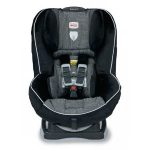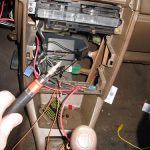NOTE: The following information is intended to help you install a car seat correctly. However, no Internet article is a substitute for an in-person car seat inspection. Before taking your new baby home in your car seat, be sure to contact your local fire department or hospital to ask about car seat installation programs. As a result, we accept no responsibility for anyone who installs a seat incorrectly after reading our guide.
 Car seats are no longer optional safety equipment. They protect the fragile bodies of our children in a car crash. Because an error could be deadly for the little ones you love most, installing the car seat correctly is vital. These instructions will walk you through car seat installation, but be sure to have your local fire or police department check your work.
Car seats are no longer optional safety equipment. They protect the fragile bodies of our children in a car crash. Because an error could be deadly for the little ones you love most, installing the car seat correctly is vital. These instructions will walk you through car seat installation, but be sure to have your local fire or police department check your work.
Before You Begin
You will need to skim through your car seat’s manual to get an understanding of how to install your seat. By doing so, you will notice any instructions particular to your car seat model, making this normally aggravating process as easy on yourself as possible.
If you are installing a car seat after a car accident, check with the insurance company to find out if the seat is still safe to use. The best auto insurance companies will pay to replace a damaged car seat after an accident if there is a chance the seat was damaged.
The Procedure
When using your car’s seat belt to secure the car seat, first you must position the seat correctly. Then feed the two parts of your car’s seat belt though the side openings of the car seat, one at a time, and buckle it. Make sure the belt is not twisted. Pull on the belt to make sure it is as tight as possible. Increase the tightness by putting your weight on the seat and pulling at the belt. Make sure the seat is immovable by yanking at its sides. If you find that the seat moves, secure it with the locking clip that came with either the car or the car seat. The locking clip is constructed to fit around the seat belt. This ensures that the child’s seat is firmly gripped.
In addition to installing the car seat properly, parents can do a few things to ensure the baby is even safer and more comfortable:
Rear-Facing Seats
These are recommended for newborns, but recent studies suggest rear-facing seats might be best for children up to age 2. If you have a rear-facing seat, it should only be installed in the back seat. A precaution to take while installing this type of seat is to make sure the seat belt and harness are not too loose. Also, check that the seat’s retainer clip sits high, preferably on the baby’s chest, for maximum protection.
The LATCH System
The acronym for Lower Anchors and Tethers for Children, LATCH is a method of permanently attaching the child’s seat to anchors found in the car, as opposed to using only the vehicle’s seat belt. This dramatically reduces the risk of injury to your child in the case of an accident. It is possible to have older model cars fitted with this anchoring system, but generally speaking most cars built from the late 1990’s on have the LATCH system.
Proper Use of the Locking Clip
Proper use of this clip (which looks like an oversized paper clip) ensures that the buckles on both the child seat and seat of your car are taut. The clip is attached to both parts (shoulder and lap) of your car’s seat belt to hold them together. It should be installed just above the clipping mechanism or buckle. Use this clip to prevent your car’s belt system from malfunctioning when you need it most. Following these procedures will allow you to rest easy knowing that your infant or toddler is as safe as possible.
AutoInsurance.Info wants you to remember to have a police or fire department check the installation for you. It only takes five minutes and could save your child’s life.




